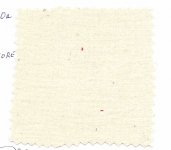roadrunner
Bronze Member
- Jan 28, 2012
- 1,230
- 521
- Detector(s) used
- Garrett Groundhog-2012-1st MD.
White's Goldmaster V/Sat-2nd-MD-2013
Tesoro Lobo-2015-3rd
- Primary Interest:
- Prospecting
Is any cloth ok or should the bellows have rubber backing on it so it does not leak air.
How about the cloth under riffles,jeans ok,or should use lighter like t-shirt or pillow case cotton.
I am building one and have the frame up but down to the last 2 items of cloth.
Will check around for used ones also.
How about the cloth under riffles,jeans ok,or should use lighter like t-shirt or pillow case cotton.
I am building one and have the frame up but down to the last 2 items of cloth.
Will check around for used ones also.




